There is no one pattern for a Filipino wedding because the country is made up of over 7,000 islands that are home to a diverse range of people and customs. Every individual custom, on the other hand, reflects a strong feeling of family and community.
Table of Contents
Wedding traditions in the Philippines became heavily influenced by Catholicism after the country was colonised by the Spanish in the 18th Century, meaning nowadays, Filipino weddings are an interesting combination of Christian-ceremonies dotted with superstitions and folklore.
To find out how this culture celebrates its traditions, I spoke with Jane Khouri, a first generation Filipino woman to shed some light and explain the origins on some of the more common customs.
1. They Know How to Party with a 3-Day Long Wedding Celebration
The native wedding was a three-day event long before the Spaniards set foot on Philippine territory, complete with cultural rites like as the blessing of rice grains, the taking of blood, and the symbolic joining of the couple by cord. While many of these pre-colonial practises have now been simplified, they have been flavoured with more Hispanicized and Americanized traditions.
In modern times, a traditional Filipino wedding nowadays an array of rituals including: candle lighting, coin blessing, veiling, tying of the nuptial rope, and rice grain flinging. The godparents would light the couple’s candles during the candle ritual, after which they would light a bigger, central candle as a gesture of oneness. The three candles, on the other hand, serve as a reminder that this commitment requires the participation of three people: the two partners as well as God.
Jane: Traditionally, Filipino weddings would have a 3-day event and bring the family and guests home for a celebration. My Mother had her own 3-day wedding, so this is a tradition that is still around.
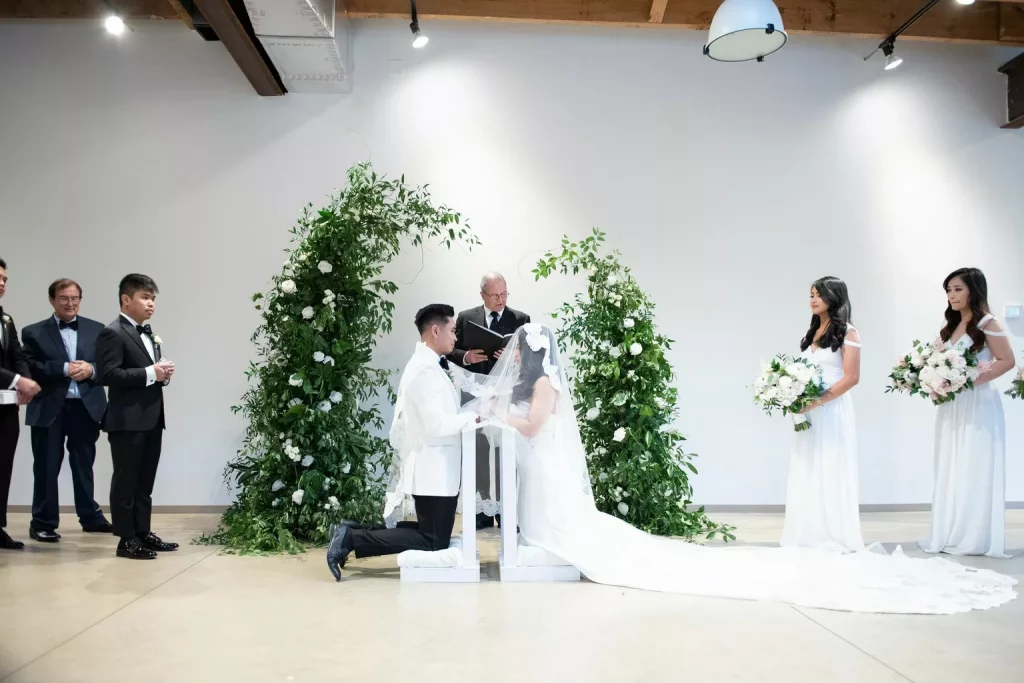
2. As Part of the Ceremony, the Priest Draws Blood from the Couple
A typical three day ceremony was administered by a tribal priest or priestess. Their residence served as the nuptial’s ceremonial focus. During the ceremony the priest would pierce their chests to take a little amount of blood, which would be placed in a jar and mixed with water.
Jane: The bride and groom would bring the priest to their home to do a blessing which involves the couple joining hands over a container. The priest then pricks the chests of the bride and groom and catch their blood in a container. We have a very religious culture and anything to do with superstitions is still absolutely important.
3. Family is Key in the Wedding
Due to their family-oriented emphasis, Filipino weddings are large, extravagant ceremonies. Almost usually, the entire family is invited, with many of them serving as ninongs and ninangs (godparents or sponsors) for the ceremony. As a result, invites are frequently long and detailed, specifying exactly “who” they want from the entourage
Jane: Family is absolutely important in a Filipino wedding. Instead of a bridal party, we have ‘sponsors’. First sponsors are close friends or family to the bride and groom and would be similar to the best-man and the maid of honour, these sponsors are chosen by the family of the couple.
Second sponsors are generally three couples, who are similar to the bridesmaids and groomsmen. These sponsors each have their own duty at the wedding. One pair are chosen to light the wedding candles during the ceremony, another handle the veil and the third wrap the cord around the couple.
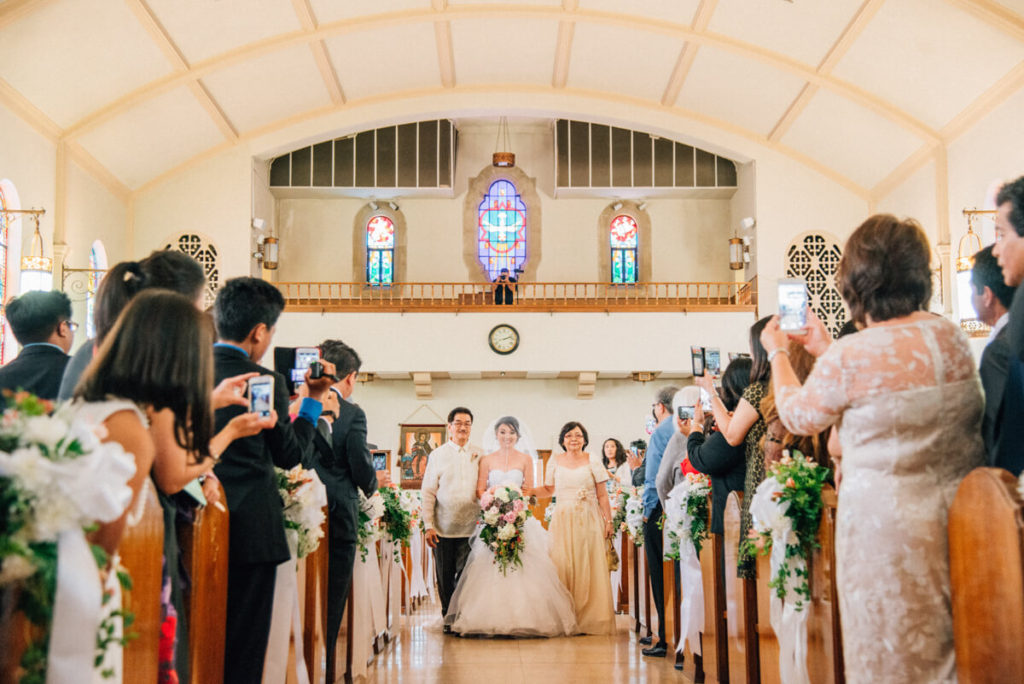
4. The Groom Should Pay-up to Prove his Devotion
The first sponsor, or the coin sponsor gives the groom 13 pieces of gold or silver coins in a bag as a promise that the groom can look after the bride. This is a sign of his devotion to his wife and the wellbeing of his children.
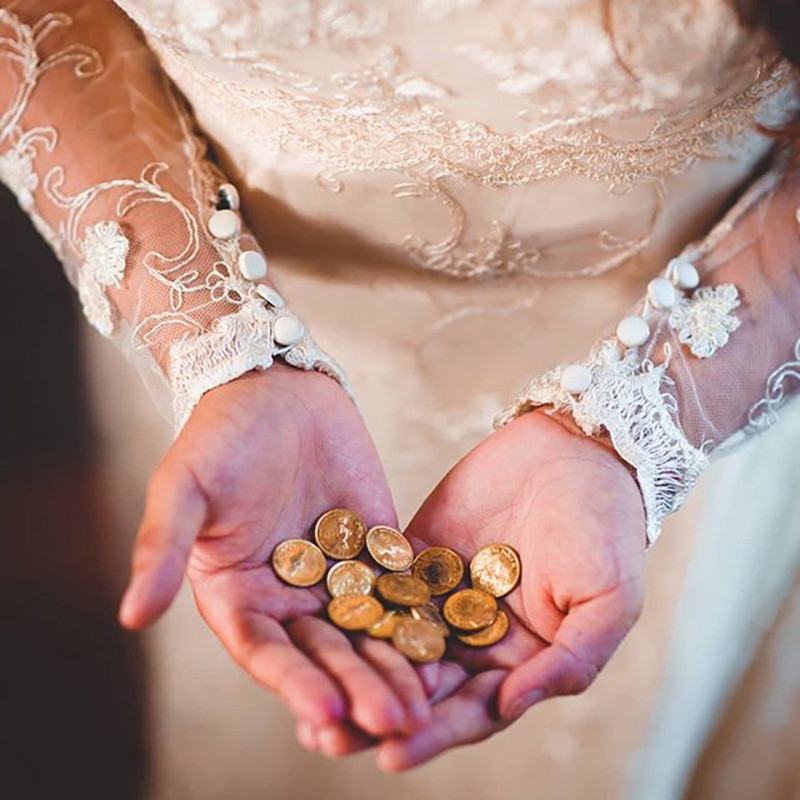
5.The Wedding Candle can Predict Death
During the ceremony, the sponsors light a pair of candles, one on each side of the bride and groom. This is a Christian practice that has been introduced into Filipino culture. We have put our own spin on it, however, and have a superstition that if one of the candles blows out during the rite, the person beside it will die before their spouse.
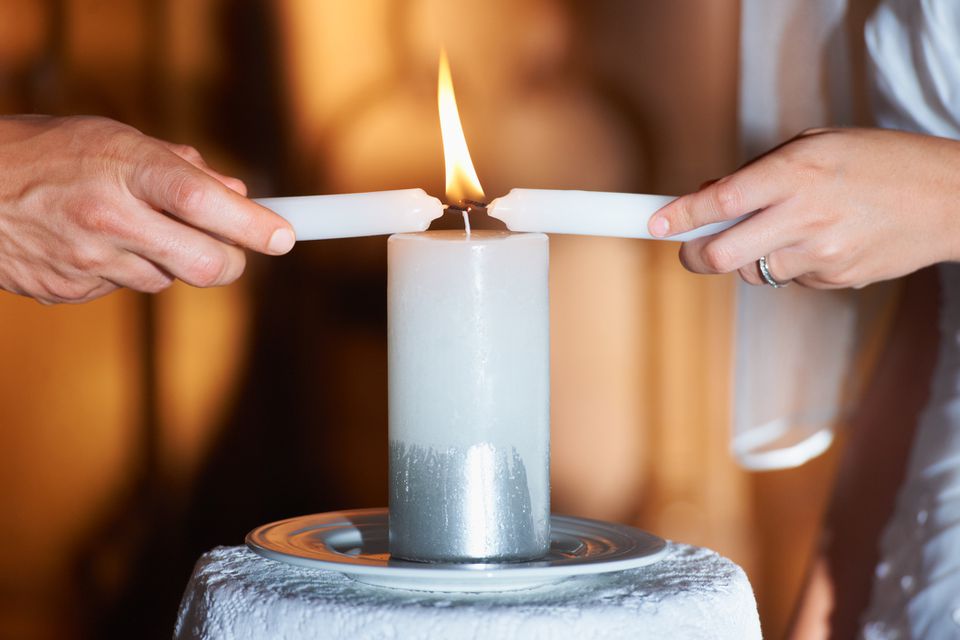
6.The Groom Dons a Veil Too
The veiling ceremony, which represents humility, is a symbol that God would assist them in bearing whatever problems they may face throughout their marriage. Sponsors would dress the bride and groom as one, placing the veil on the groom’s shoulders and the bride’s head.
7. The Cord and the Infinity Sign
After the veiling, second sponsors will wrap a cord of material, flowers, chained coins or a rosary around the collars of the bride and groom in a figure ‘8’. This again, signifies two becoming one.
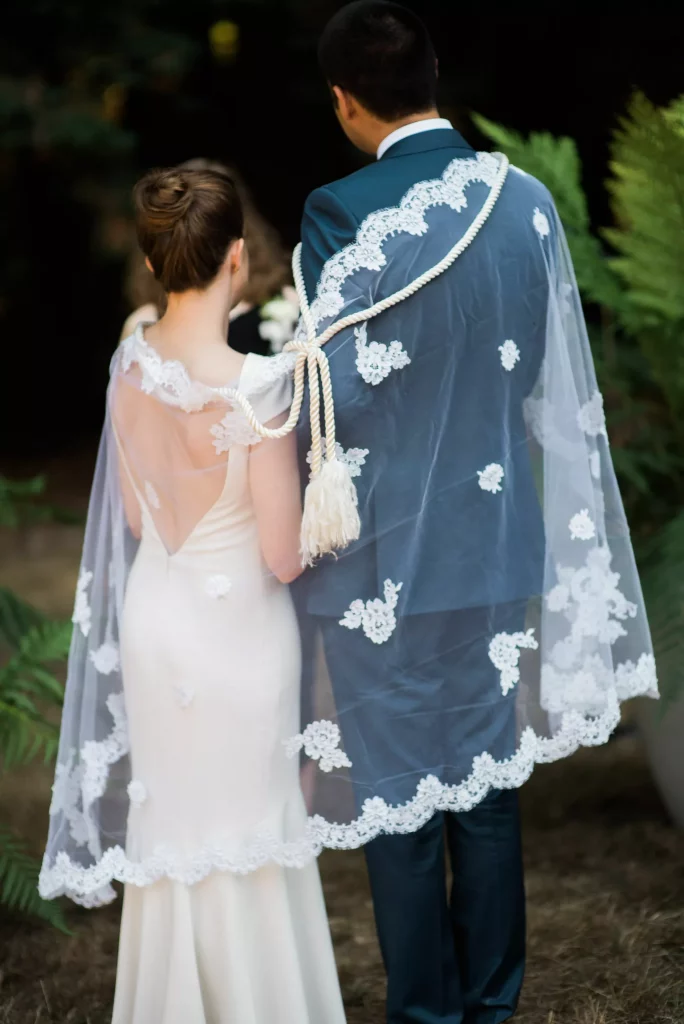
8. The Wedding Dress isn’t a Dress
Jane: Traditional Filipino brides wore a Baro’t Saya, which is a long skirt which sits high on the waist and a cropped box top with puffy long sleeves. Some modern brides still choose to wear the traditional dress and if this happens, the groom will usually wear a Barong Tagalog. My Father wore this to his wedding!
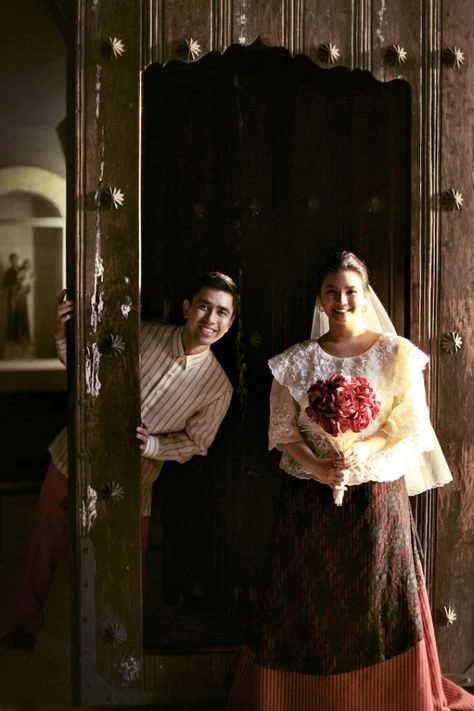
9. Never Buy a Set of Kitchen Knives for the Couple!
Another superstition is that of sharp objects. They should never be given to the happy couple.
Jane: This is still true in modern Filipino culture. You should never buy the bride and groom sharp objects like knives and scissors as a wedding gift because it is bad luck.
10. Brides Pray for Rain on their Wedding Day
Rain might be a nuisance if you’re having an outdoor or garden wedding. In the Philippines, however, this is not the case! Rain is said to represent good luck and wealth, according to one of the most prevalent wedding day superstitions. Rain on your wedding day is a sign of good fortune for you and your spouse.
Jane: Rain on your wedding day is a sign for prosperity, so most Filipino couples would be happy to have bad weather.
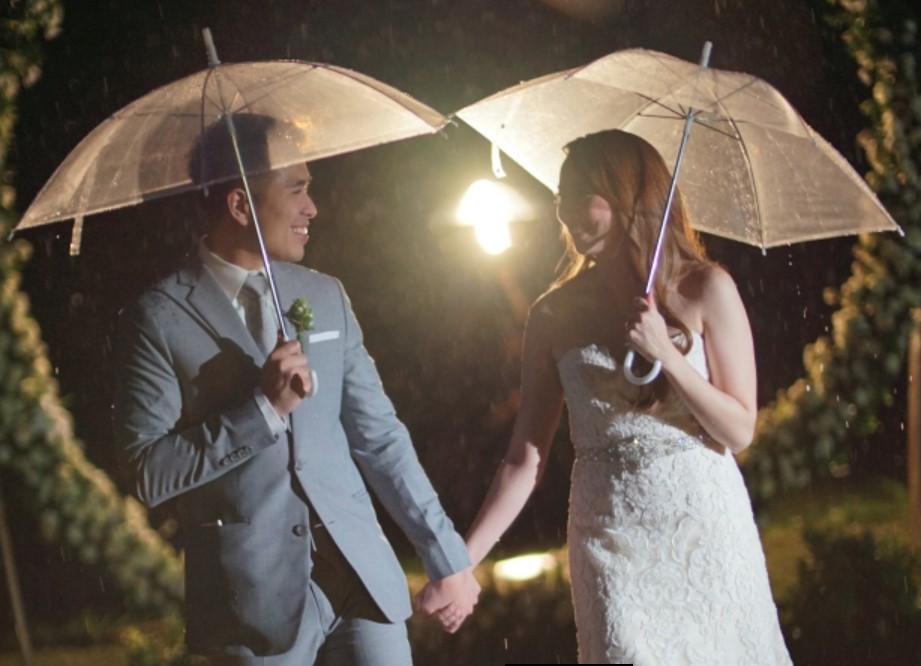
11. Brides Stomp on their Groom
Jane: After the ceremony, the bride should walk ahead of her groom or step on his foot in order to prevent being dominated by him throughout the marriage. This is something that is still practised today.
12. It’s Bad Luck for the Bride to Try on her Wedding Dress
This is one of the most difficult Filipino wedding rituals to follow! It is a popular idea that brides who try on their final wedding gown before the big day will have bad luck. Some people even believe that wearing the final gown to a dress fitting implies the wedding will be cancelled!
Jane: A bride should never try on her wedding gown just for the sake of trying it on. It’s considered very bad luck.
13. Don’t Drop the Ring!
It’s bad luck, according to this wedding ring superstition. A fallen wedding ring is also said to be a sign that someone in the family will die soon.
Jane: If someone accidently drops the ring, the veil or the 13 coins, it’s a sign that the marriage will be miserable. The couple had best choose a wedding party who has steady hands!
14. Only One Wedding Per Year
While it may sound appealing to share wedding joy with a sibling, wedding superstitions in the Philippines suggest otherwise. Traditional Filipinos follow the sukob superstition, which states that sisters should not marry in the same year. If they do, the whole amount of marital luck they should each receive will be split between them.
Jane: Siblings aren’t permitted to get married in the same calendar year as it’s considered bad luck.
15. The Groom Still Asks the Bride’s Parents For Permission
A guy woos his partner throughout the courtship stage in order to finally win her hand in marriage. Young males, particularly in rural regions, would accomplish this by serenading women. When a couple achieves a greater level of commitment, the engagement ceremony is performed, which is now signified by the wearing of matching rings.
He and his family then formally visit the woman’s home to declare his intentions for marriage before the girl’s family.
Jane: Before a groom proposes, he would go with someone to the house of the bride’s family and bring a gift, as well some food as a gesture to say ‘yes I want to take your daughter’s hand’. Traditionally, the groom would come with some members of his own family.
FAQs about Filipino weddings
What to wear to a Filipino wedding?
Guests may feel pressured to join as more couples are encouraged to commemorate their Filipino background on their wedding day.
The now rule you should adhere to is conservative clothing. Modest dressing is a must in a Filipino wedding, especially at the ceremony. If the couple has specified a dress code or colour scheme it is essential to honour it. ultimately, like any wedding, it depends.
How many bridesmaids in a Filipino wedding?
Candle, Veil, and Cord are the only bridesmaids required for a Catholic church wedding. One bridesmaid to represent each of the items. Although, since Filipinos have large families and many friends, many brides choose to have more bridesmaids.
Who pays for a Filipino wedding?
The grooms family pays for the wedding.
How many sponsors for a Filipino wedding?
The couple chooses numerous pairs of ninongs and ninangs as an extension of the wedding party in a typical Filipino Catholic wedding. A civil wedding requires at least two major sponsors to sign the marriage certificate on the couple’s behalf. They also serve as witnesses to the marriage’s validity.